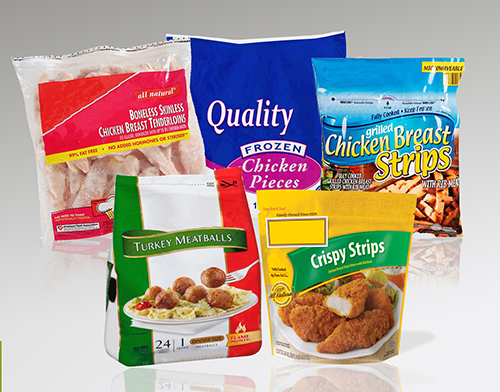How Packaging Equipment Design Can Reduce the Risk of Listeria
Feb 06, 2025
Data from the Food and Drug Administration shows that the number of food recalls in 2024 surpassed 1,900, reaching the highest point since 2019. As of October 2024, the count for the fiscal year 2025 has already exceeded 300. The Centers for Disease Control and Prevention estimates that foodborne illnesses in the United States impact 48 million people each year, leading to 128,000 hospitalizations and 3,000 fatalities.
As demonstrated by FDA investigations into past outbreaks, modern food packaging equipment is pivotal in preventing bacterial contamination. Equipment design and sanitation emerged as key factors in the Jensen Farms case, highlighting how crucial proper machinery selection becomes in maintaining food safety.
This guide will explore how strategic equipment choices and innovative design features can significantly reduce Listeria risks in snack, meat, and produce packaging operations. Whether upgrading existing lines or planning new installations, understanding these principles could help safeguard consumer health and your facility's future.
Critical Points in Packaging Where Listeria Can Thrive
Product Contact Surfaces
Packaging equipment creates numerous opportunities for Listeria colonization, particularly in areas directly touching food products. Traditional equipment designs often include microscopic crevices, rough welds, and hollow regions that trap moisture and organic debris. These seemingly minor design flaws become perfect breeding grounds for bacterial colonies.
Take a typical conveyor system, for instance. The belt's tracking mechanism can harbor bacteria in its grooves and bearings, while transfer points between different sections create additional harborage points. Even tiny scratches on stainless steel surfaces can provide enough shelter for Listeria to establish itself.
Environmental Control Zones
The area surrounding packaging equipment requires careful consideration in Listeria prevention. Condensation from overhead pipes, floor drains, and even compressed air systems can introduce moisture into the packaging environment. These moisture and ambient temperature fluctuations create microclimates ideal for bacterial growth.
Unfortunately, many facilities discover these vulnerable areas only after routine environmental testing reveals a problem. By then, Listeria may have already established resistant biofilms in multiple locations, requiring extensive remediation efforts.
Material Handling Transitions
Each point where packaging materials or products transfer between processes presents a unique risk. Loading film rolls, accumulating products on catch pans, and moving packaged goods through sealing stations all create opportunities for contamination. These transition points often combine several risk factors: human interaction, product residue accumulation, and equipment complexity.
5 Packaging Equipment Design Features That Combat Listeria
1. Hygienic Design Principles

Modern packaging equipment incorporates several key design elements that actively prevent bacterial harborage. Continuous welds replace spot welds, eliminating potential debris collection points. Sloped surfaces and frame members ensure complete drainage, while standoffs keep bearings and drives away from product zones. These aren't just aesthetic choices—they fundamentally change how bacteria interact with equipment surfaces.
2. Automated Material Handling
Advanced automation reduces human contact with products and packaging materials, significantly lowering contamination risks. Robotic systems now handle everything from product loading to case packing, maintaining consistent hygiene levels throughout operations. These systems excel in high-risk environments where traditional manual handling might compromise food safety.
3. Clean-in-Place Innovation
Revolutionary Clean-in-Place (CIP) systems have transformed sanitation procedures. These systems deliver precise cleaning solutions to every equipment surface, reaching areas manual cleaning might miss. However, the innovation goes beyond cleaning – modern CIP systems integrate with production schedules, providing automated cleaning validation and documentation.
4. Smart Surface Technology
Recent advances in materials science have produced surfaces that actively resist bacterial attachment. These technologies, from specialized stainless steel finishes to antimicrobial coatings, make it harder for Listeria to establish footholds. When combined with proper sanitation protocols, these surfaces significantly reduce the risks of biofilm formation.
5. Environmental Control Integration
Modern packaging systems now incorporate environmental monitoring capabilities. Integrated sensors track temperature, humidity, and airflow patterns, alerting operators to conditions that might promote bacterial growth. This proactive approach helps maintain optimal conditions that inhibit Listeria proliferation.
Packaging Machinery Solutions for Minimizing Cross-Contamination
BW Flexible Systems offers a wide range of flexible packaging machinery solutions that are designed with hygienic features for the highest food safety and sanitation. Specifically, the Hayssen ISB (Intelligent Sanitary Bagger) sets a new standard in hygienic vertical form-fill-seal (VFFS) design, that is easy to use and easy to clean.
- Designed with sanitary open-channel framing for optimal hygiene
- Equipped with IP66 and NEMA 4X-rated components for exceptional durability and protection
- Features tool-free changeovers to maximize efficiency and reduce downtime
- TruFORM forming set to ensure consistent, high-quality packaging
- Built with high-pressure washdown capability for thorough and reliable cleaning
The ISB's modular design offers seamless customization while upholding the highest hygiene standards across a wide range of applications, including poultry, fresh produce, frozen foods, dairy, and seafood. Its cutting-edge wire routing system eliminates the contamination risks typically associated with bundled wires, ensuring a safer operation. Additionally, sloped surfaces are thoughtfully engineered to promote thorough drainage, enhancing cleanliness and efficiency throughout the machine.
Conclusion
Investing in adequately designed packaging equipment is far less costly than managing a contamination crisis.
Today's packaging technology offers unprecedented control over Listeria risk factors. Integrating automated systems, innovative materials, and intelligent monitoring capabilities creates multiple barriers against contamination. These advances and proper maintenance and sanitation protocols provide food manufacturers with powerful tools for protecting public health and brand reputation.
Ready to enhance your facility's Listeria prevention strategy? Contact BW Flexible Systems to explore our range of hygienically designed packaging solutions. Our experts can help you identify potential risks in your current setup and recommend equipment upgrades that align with the latest food safety standards.
Contact us to get started